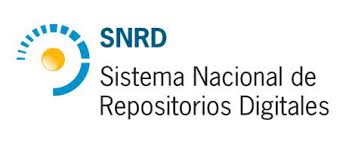Mostrar el registro sencillo del ítem
Modos deslizantes aplicados a un sistema macroeconómico
| dc.contributor.author | Cirera, Eduardo Alberto | |
| dc.contributor.author | Martínez, Cinthia Alejandra | |
| dc.date.accessioned | 2021-05-10T15:23:53Z | |
| dc.date.available | 2021-05-10T15:23:53Z | |
| dc.date.issued | 2014-05 | |
| dc.identifier.citation | Cirera, Eduardo y Martínez, Cinthia Alejandra, 2014. Modos deslizantes aplicados a un sistema macroeconómico. En: Seminario de Econometría y Estadística. Buenos Aires: Universidad Buenos Aires. Facultad de Ciencias Económicas, p. 1-12. | es |
| dc.identifier.uri | http://repositorio.unne.edu.ar/handle/123456789/27899 | |
| dc.description.abstract | The causes of the inflation and how to use monetary and economic policies to stabilize this variable, has been widely analyzed by the Theory and Applied Economics. That theory results sometimes incomplete when it's translated into economic policies, for countries with high or medium persistent levels of inflation in the long run. Inflation in Latin American countries seems to be caused by different and/or additional facts than in more advanced countries. The effects over social development and welfare of high rates of inflation are sufficiently known, but generally the main concern is the lost of purchasing power in the low income workers, the reduce of investment by the companies and the general deterioration of the Economy. Because inflation is a phenomena that shows particularities from time to time, and from country to country, and still remains as a big unsolved problem for some Latin American countries, is needed to revisit theories, finding the basement of its mechanisms and looking for new solutions. Many hypothesis, points of view (monetary, income distribution and demand inflation), short and long run inflation, nominal rigidities and several models have been studied. Here we propose a new model for testing traditional like a modified Phillips curve, as an starting point of empirical research. This is a project and a proposal of research, so it doesn't have results. In the first part, we explain a mathematical model that was taken from Engineering for input-output systems, which has the goal of stabilizing the output. In the second part, we expose a simple three-equations monetary model, which will be our starting point. In the third part, we explain how the research is thought to be continued | es |
| dc.format | application/pdf | es |
| dc.format.extent | p. 1-12 | es |
| dc.language.iso | eng | es |
| dc.publisher | Universidad de Buenos Aires | es |
| dc.rights | openAccess | es |
| dc.rights.uri | http://creativecommons.org/licenses/by-nc-nd/2.5/ar/ | es |
| dc.subject | Métodos matemáticos | es |
| dc.subject | Modos deslizantes | es |
| dc.subject | Macroeconómico | es |
| dc.title | Modos deslizantes aplicados a un sistema macroeconómico | es |
| dc.type | Documento de conferencia | es |
| unne.affiliation | Fil: Cirera, Eduardo Alberto. Universidad Nacional del Nordeste. Facultad de Ingeniería; Argentina. | es |
| unne.affiliation | Fil: Martínez, Cinthia Alejandra. Universidad Buenos Aires. Facultad de Ciencias Económicas; Argentina. | es |
| unne.event.city | Buenos Aires | es |
| unne.event.country | Argentina | es |
| unne.event.title | Seminario de Econometría y Estadística | es |










